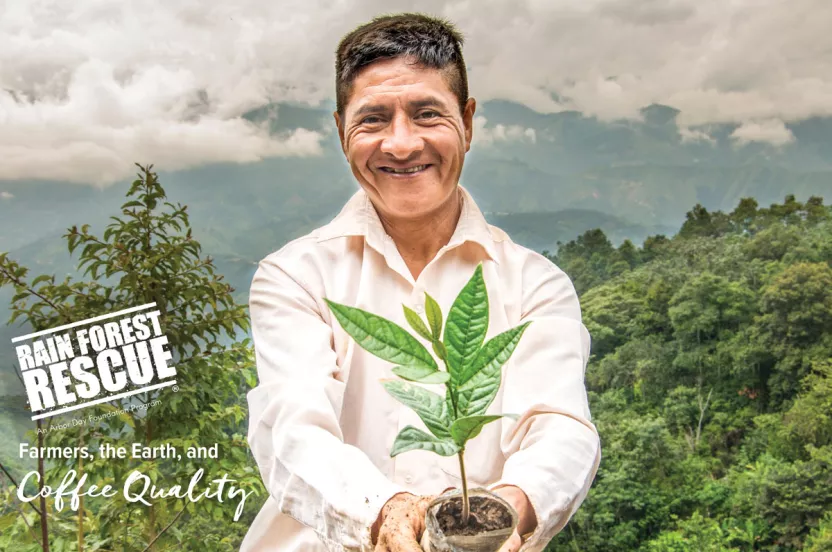Give before midnight on July 31 to double your impact where trees need us most. CHOOSE A PROJECT
Great coffee starts with great beans, but harvesting beans requires energy, energy that releases carbon. There are so many people involved from seed to cup that it makes it crucial now more than ever to offset carbon and cut emissions wherever possible. One pound of roasted coffee produces an average of 11 pounds of carbon. The three largest culprits of carbon emissions in the coffee supply chain happen at the farm, mill, and consumption level.
Harvesting coffee emits a lot of carbon, which is why growing coffee in harmony with trees is so important to offsetting these emissions. In countries where limited resources are available, much of the traditional harvesting methods that don't depend on heavy machinery are more sustainable than modern techniques.
But the greatest area of carbon emissions happens at consumption. Think of a coffee shop and all the energy it requires to operate. Things like heating and cooling, the constant use of outlets and machines, lighting, and of course paper products all leave a carbon footprint. But minor changes such as unplugging machines when they’re not in use, turning lights off in areas not in use, and offering paper cup alternatives such as mugs, can have a significant impact in reducing carbon emissions.
If we want to cut carbon emissions, we must work with every part of the supply chain. We are committed to reducing the carbon footprint of coffee as much as possible, but there is still work to be done at the consumption level.
This is an excerpt from the Arbor Day coffee newsletter. Read the full stories and get coffee tips by subscribing to the coffee newsletter.




